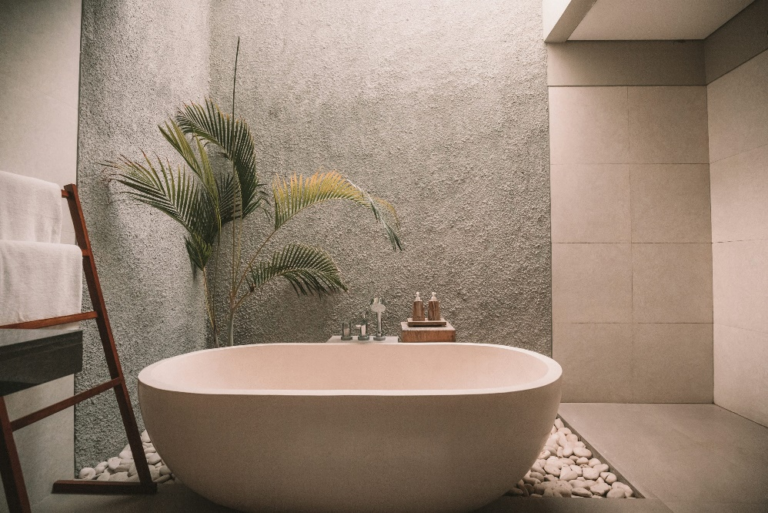In today’s fast-paced world, many individuals are turning to minimalist home design as a means to cultivate a stress-free living environment. By focusing on simplicity, functionality, and intentionality, minimalist design creates spaces that promote tranquility and clarity.
This approach not only enhances the aesthetic appeal of a home but also contributes to the well-being of its inhabitants.
In cities like Nashville, where modern living often blends with traditional Southern charm, many homeowners are embracing minimalist design to create serene, clutter-free spaces that provide a welcome retreat from the hustle and bustle.
The Role of Bathroom Renovations in Minimalist Design
Bathrooms play a crucial role in minimalist home design, serving as personal sanctuaries where one can unwind and rejuvenate. A well-designed bathroom embodies the principles of minimalism through clean lines, uncluttered spaces, and the use of natural materials. Incorporating elements such as frameless glass showers, neutral color palettes, and streamlined fixtures can transform a bathroom into a serene retreat.
In the city of Nashville shower remodels are quite popular, reflecting a growing trend towards creating minimalist and spa-like bathroom spaces. Homeowners are increasingly opting for open, spacious designs that promote relaxation, often featuring walk-in showers with sleek, modern fixtures.
This shift towards minimalist bathroom design not only enhances the aesthetic appeal of the home but also contributes to a more stress-free living environment.
Decluttering: The First Step Towards Minimalism
A fundamental aspect of minimalist home design is decluttering. Removing unnecessary items from living spaces creates a sense of order and calm, which is essential for reducing stress. Begin by evaluating each room and identifying items that do not serve a functional or aesthetic purpose. Donate or dispose of these items to free up space and create a more open environment.
Implementing effective storage solutions is also vital. Built-in storage options, such as cabinets and shelves, help keep belongings organized and out of sight, maintaining the clean lines characteristic of minimalist design.
Multi-functional furniture, like ottomans with hidden storage or beds with built-in drawers, can further optimize space and reduce visual clutter.
Embracing Neutral Palettes and Natural Materials
Color and material choices significantly impact the ambiance of a minimalist home. Neutral color palettes, including shades of white, beige, gray, and soft earth tones, create a serene and cohesive look. These colors reflect light, making spaces feel larger and more open.
Incorporating natural materials adds warmth and texture to minimalist interiors. Elements such as wood, stone, and linen introduce organic beauty and connect the indoor environment with nature, enhancing the overall sense of tranquility.
For instance, wooden flooring or stone countertops can serve as focal points that enrich the minimalist aesthetic without overwhelming the space.
Maximizing Natural Light
Natural light is a cornerstone of minimalist design, contributing to the openness and airiness of a space. Maximizing the entry of natural light can be achieved through the use of large windows, skylights, and open floor plans. Sheer or minimal window treatments allow light to filter in softly, maintaining privacy while enhancing brightness.
Mirrors are another effective tool for amplifying natural light. Strategically placing mirrors opposite windows reflects light throughout the room, creating an illusion of expanded space and further promoting a stress-free atmosphere.
Incorporating Functional Furniture
In minimalist home design, every piece of furniture should serve a purpose, often fulfilling multiple functions. Selecting furniture with clean lines and simple forms ensures that each item contributes to the overall harmony of the space.
Opt for pieces that offer storage solutions or can be easily reconfigured to suit different needs. For example, a dining table that doubles as a workspace or a sofa that converts into a guest bed adds versatility without contributing to clutter.
This approach aligns with the minimalist principle of “less is more,” where the focus is on quality and functionality over quantity.
Creating Open and Airy Spaces
Open floor plans are a hallmark of minimalist design, fostering a sense of freedom and fluidity within the home. By minimizing the use of walls and partitions, spaces flow seamlessly into one another, enhancing the feeling of spaciousness.
Furniture arrangement plays a crucial role in maintaining openness. Positioning furniture to allow for easy movement and clear sightlines prevents spaces from feeling cramped. Additionally, keeping surfaces clear and limiting decorative items to a few carefully chosen pieces prevents visual clutter and promotes a calm environment.
Personalizing with Purpose
While minimalist design emphasizes simplicity, it does not necessitate the elimination of personal touches. Incorporating meaningful items, such as artwork or souvenirs, adds character and warmth to the space. The key is to select pieces that resonate personally and complement the overall aesthetic without overwhelming it.
Displaying a few cherished photographs or a piece of art can serve as focal points that enrich the space. By curating personal items thoughtfully, the home reflects the inhabitant’s personality while maintaining the serenity inherent in minimalist design.
The Psychological Benefits of Minimalist Design
Adopting minimalist home design extends beyond aesthetic appeal; it has tangible psychological benefits. A clutter-free environment reduces sensory overload, allowing the mind to rest and focus. This clarity can lead to improved concentration, increased productivity, and a general sense of well-being.
Moreover, minimalist spaces require less maintenance, reducing the time and effort needed for cleaning and organization. This efficiency allows for more time to engage in activities that promote relaxation and happiness, further contributing to a stress-free lifestyle.
All in all, embracing minimalist home design is a deliberate choice to prioritize simplicity, functionality, and tranquility. By thoughtfully curating belongings, utilizing neutral palettes and natural materials, maximizing natural light, and selecting functional furniture, one can create a living environment that not only pleases the eye but also nurtures the soul.
Today, homeowners are recognizing the profound impact that minimalist design can have on their quality of life, leading to spaces that truly embody the adage “less is more.”
Unlock exclusive insights and updates on Horizan THANK YOU!

